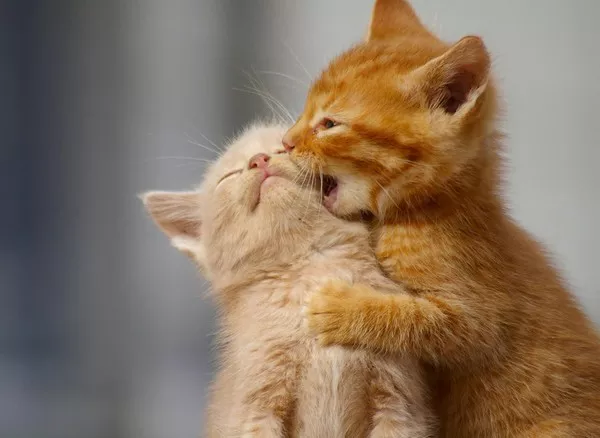The American Eskimo, known for its stunning white coat and fluffy appearance, has captivated the hearts of dog enthusiasts worldwide. However, some pet owners find themselves puzzled when their beloved American Eskimo doesn’t exhibit the expected level of fluffiness. In this article, we will delve into the various factors that can influence the fluffiness of your American Eskimo, exploring both genetic and environmental aspects that contribute to their coat characteristics.
Genetic Factors and Coat Variations:
One of the primary determinants of your American Eskimo’s fluffiness lies in its genetic makeup. Eskimos, like many dog breeds, exhibit variations in coat texture and length. Some American Eskimos are naturally predisposed to have a denser and fluffier coat, while others may have a sleeker appearance. Understanding that these differences are inherent to the breed is crucial in appreciating the uniqueness of each individual Eskimo.
Nutritional Influence on Eskimo Coat Health:
The health and fluffiness of your American Eskimo’s coat are closely linked to its nutritional intake. A well-balanced diet rich in essential nutrients, such as omega-3 fatty acids and protein, is instrumental in maintaining a healthy and lustrous coat. Ensure that your Eskimo is receiving a high-quality dog food that meets its specific dietary needs, as poor nutrition can contribute to dullness and reduced fluffiness in the coat.
Grooming Practices and Eskimo Coat Maintenance:
Regular grooming plays a pivotal role in enhancing and preserving the fluffiness of your American Eskimo’s coat. Brushing your Eskimo’s coat not only removes loose fur and prevents matting but also stimulates the production of natural oils that contribute to a shiny and fluffy appearance. Establishing a consistent grooming routine tailored to your Eskimo’s specific coat type is essential for maintaining optimal fluffiness.
Climate and Its Impact on Eskimo Coats:
The climate in which your American Eskimo resides can significantly influence the perceived fluffiness of its coat. Eskimos are well-adapted to colder environments, and their double coat serves as insulation against harsh weather conditions. In warmer climates, some Eskimos may shed more excessively, leading to a temporary reduction in fluffiness. Understanding your Eskimo’s natural response to different climates can help manage your expectations regarding its coat density.
Age-Related Changes in Eskimo Coats:
Just as humans experience changes in hair texture and appearance with age, American Eskimos undergo similar transformations. Puppies often have softer and less dense coats, gradually developing the characteristic fluffiness as they mature. If your Eskimo is still in its puppy stages, patience is key, as its coat is likely to undergo changes in the coming months.
Health Issues Affecting Eskimo Coat Quality:
Eskimos, like any other breed, may face health issues that can impact the quality of their coat. Skin conditions, allergies, or hormonal imbalances can manifest in changes to the coat, including reduced fluffiness. If you notice a significant departure from the typical coat characteristics of the breed, it’s advisable to consult with a veterinarian to rule out any underlying health concerns.
Eskimo-Specific Coat Care Products:
Investing in grooming products specifically formulated for American Eskimos can contribute to maintaining their fluffiness. Shampoos and conditioners designed for double-coated breeds can help nourish and enhance the texture of your Eskimo’s coat. Be cautious when selecting products, ensuring they are suitable for your Eskimo’s individual coat needs.
The Role of Genetics in Eskimo Coat Color:
In addition to coat texture, the coloration of an American Eskimo’s coat is also influenced by genetics. While white is the most common color for Eskimos, variations such as cream or biscuit may occur. Understanding the genetic factors that determine coat color can provide insights into the overall appearance of your Eskimo, including its perceived fluffiness.
See Also: Understanding the Cost of American Eskimo Dogs
Professional Grooming Services for Eskimos:
For those who find themselves struggling to maintain their American Eskimo’s fluffiness at home, seeking the services of a professional groomer can make a significant difference. Professional groomers possess the expertise and tools needed to enhance coat texture and manage any challenges associated with grooming. Regular visits to a groomer can help keep your Eskimo looking and feeling its best.
Conclusion:
The fluffiness of your American Eskimo’s coat is influenced by a myriad of factors, ranging from genetic predispositions to environmental conditions and grooming practices. By understanding the complexities of these elements, you can better appreciate the unique characteristics of your Eskimo’s coat and take proactive measures to ensure its optimal health and fluffiness. Whether through a well-balanced diet, regular grooming, or professional assistance, the key lies in embracing the individuality of your American Eskimo while providing the care it needs for a luxurious and fluffy coat.
Related Topics:
The American Eskimo Dog: Unraveling its Origins and Heritage
Exploring the Majestic Stature of American Eskimos: How Big Do They Get?
Understanding the Lifespan of Miniature American Eskimo Dogs
























